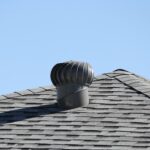Northwest Roofing is your Tarrant roof and attic ventilation expert. We are proud to be a BBB A+ local roofing contractor recommended with over 30+ years of roofing experience. Check out our customer’s testimonials.
![]()
Northwest Roofing is your Tarrant roof and attic ventilation expert. We are proud to be a BBB A+ local roofing contractor recommended with over 30+ years of roofing experience. Check out our customer’s testimonials.
![]()
The skylight installation guide is a vital resource for our clients. Skylight replacement is an essential aspect of maintaining your home’s natural light and energy efficiency. Let’s dive into the details: Continue reading Skylight Installation Guide
The Holidays and busy times are approaching. We wish all of you a very Merry Christmas and a Happy 2024 New Year! We will be closed from December 06, 2023, through December 13th and then from December 22nd through January 2, 2024. ![]()
Residential roof ventilation is based on the simple fact that warm air rises. In summer, the sun heats the air in the attic. In winter, heat from your home warms the attic air. In either season, good venting occurs when cool air can enter the attic near the eaves and exit near the peak.
The following are 10 reasons why residential roof ventilation is important:
The most common types of roof vents include ridge vents, turbine vents, power vents, soffit vents, gable vents, roof louvers, and roof jacks.
 Ridge vents: Ridge vents are the most common type of exhaust vent. They are installed along the roof’s peak and allow hot air to escape from the attic. Ridge vents are effective because they provide a continuous venting area along the entire length of the roof.
Ridge vents: Ridge vents are the most common type of exhaust vent. They are installed along the roof’s peak and allow hot air to escape from the attic. Ridge vents are effective because they provide a continuous venting area along the entire length of the roof.

Turbine vents: Turbine vents use wind to rotate a turbine, which in turn, pulls hot air out of the attic. They are effective in areas with high winds.

Power vents: Power vents use electricity to move hot air out of the attic. They are effective in areas with high humidity.

Soffit vents: Soffit vents are installed under the eaves of the roof and allow cool air to enter the attic. They work in conjunction with other types of exhaust vents, such as ridge or turbine vents.

Gable vents: Gable vents are installed on the gable ends of an attic and allow hot air to escape from the attic. They work best when used in conjunction with soffit or ridge vents.

Roof louvers: Roof louvers are similar to gable vents but are installed on the roof itself. They work best when used in conjunction with other types of exhaust vents.

Roof jacks: Roof jacks are used to vent pipes that penetrate through the roof. They can be used in conjunction with other types of exhaust vents.
For intake air, soffit vents are best. Air can passively exit through ridge vents or hood vents. Turbine vents harness the wind to suck air out of the attic. Electric-powered vents are the ultimate air movers but aren’t necessary in most situations. Gable vents can help by allowing air in or out, but they don’t usually help the airflow evenly throughout the attic.
When determining the best roof vent for your home, you’ll find many types are available. They come in two main models: intake and exhaust, both of which are required to properly ventilate a roof.
Intake vents allow cool air to enter the attic and help push out the hot air, which freshens the space and decreases air temperature. You can place intake vents on the roof in one or more different areas.
Soffit vents are holes in the panel under the house’s eaves that allow fresh air to enter the attic space.
In older homes, these vents are similar in appearance to the heating and air conditioning registers inside the house. These vents are spaced around the home on the soffits to provide adequate ventilation.
Newer homes typically have long, perforated vinyl soffits that allow for maximum ventilation. Many homeowners prefer soffit vents because they don’t detract from the appearance of the house.
Drip edge vents are suitable for homes that lack the roof overhang required for a soffit vent.
When choosing a roof vent, you should consider factors such as your climate, your home’s architectural style, and your local climate.
The number of roof vents you need depends on the size of your attic and the type of vent you choose.
A general rule of thumb is to have at least 1 square foot of ventilation for every 150 square feet of attic space.
For example, if your attic is 900 square feet, you would need a total of 6 square feet of ventilation. If you are using ridge vents, you should have a continuous vent along the entire ridge. If you are using gable vents, you should have one vent on each end of the attic. If you are using soffit vents, you should have them installed along the entire length of the eaves.
The amount of ventilation required for an attic depends on the size of the attic and the type of vent used. If you are unsure whether your attic has enough ventilation, you can check for the following signs:
In conclusion, your residential roof ventilation plays a vital role in maintaining the health and efficiency of your home. Residential roof ventilation is a critical component of maintaining a healthy, energy-efficient, and structurally sound home. It helps prevent issues related to moisture, temperature extremes, and deterioration while contributing to a comfortable living environment and long-term cost savings.
Tip: Soffit vents are the intake, and roof vents are the exhaust; just like your car, one without the other will not work.

![]()